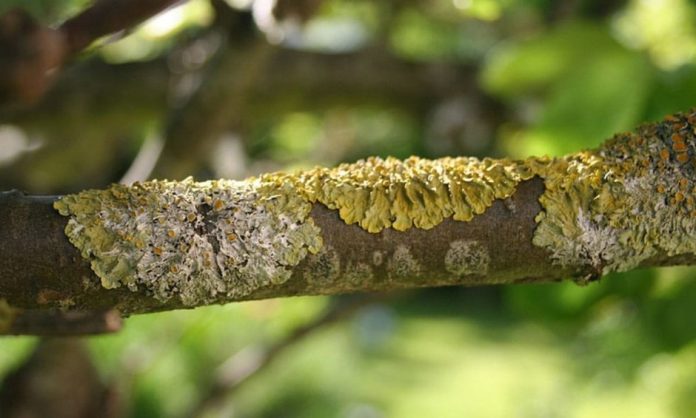
You’ve diligently maintained your yard—watering, pruning, and nurturing it—and everything looked lush and healthy until suddenly, signs of trouble appeared. Perhaps patches of grass display unusual colors or textures, or certain areas look unhealthy and appear to be spreading. Typically, when a lawn shows damaged or discolored patches, the cause is disease, fungal growth, or pest infestation. Top Tree Fungus Treatment, before considering replacing your lawn with artificial turf, it’s important to understand that your grass can be restored and revitalized with proper care.
By accurately identifying the issue and applying the right treatment, you can eliminate plant diseases and return to enjoying a vibrant, healthy lawn. The best defense against lawn diseases is maintaining strong, healthy grass—the primary goal of any professional landscaper. Preventing and managing plant diseases begins long before planting, starting with proper site preparation and selection of appropriate plant species. When a plant’s appearance deviates from normal, it’s usually a sign of stress or disease that requires immediate attention and intervention.
To correctly diagnose plant problems, landscapers must have foundational knowledge about the plant species, local environmental factors, and common diseases affecting that region. This expertise is crucial to avoid misdiagnosis, which can lead to unnecessary pesticide use, wasted time and money, and continued decline of plant health.
Preventing Lawn Disease and Fungal Growth:
The most effective strategy for managing lawn fungus and diseases is to prevent them from developing in the first place. Many issues arise due to improper lawn care habits. Even well-intentioned practices can sometimes contribute to problems. Making informed adjustments can prevent disease or mitigate its damage. Some of the most efficient lawn fungus prevention techniques include:
Watering Appropriately:
Overwatering creates damp conditions that encourage mold, mildew, and fungal growth on established grass. Water deeply but infrequently, ideally providing about one inch of water per week, to promote deep root growth and reduce the risk of fungal infections.
Sharpen Your Mower Blades:
Dull mower blades tear grass leaves instead of cutting them cleanly, causing frayed edges that are more susceptible to fungal infection. Sharp blades ensure healthy cuts, reducing the chances of disease. It’s best to sharpen blades in early spring and again during the mid-summer for large lawns.
Remove Only About One-Third of the Grass Height When Mowing:
Cutting more than one-third of the grass blade at once stresses the lawn and increases vulnerability to diseases. For most grass types, such as fescue, maintain a cutting height near 3.5 inches; Bermuda grass thrives when mowed at 2 inches, while zoysia grass is best kept between 2.5 to 3 inches. Frequent mowing during rapid growth maintains a healthy lawn and helps prevent fungal outbreaks.
Apply Fertilizer Correctly:
Under-fertilizing deprives grass of essential nutrients, weakening root and leaf development, whereas over-fertilizing leads to vigorous blade growth that roots cannot support, increasing disease susceptibility. Use fertilizers tailored to your specific turfgrass type (e.g., fescue, Bermuda) and apply them precisely as recommended, using a calibrated spreader to ensure even distribution.
Dethatch to Remove Dead Grass:
Thatched layers of dead grass accumulate near the soil surface, suffocating live grass blades and creating a breeding ground for fungi. Dethatching removes this layer either manually using a dethatching rake or mechanically with a power dethatcher, which can be rented from garden centers for larger lawns. Regular dethatching—especially in high-traffic areas—promotes better air circulation and healthier turf growth.
Aerate Your Lawn to Loosen Compacted Soil:
Compacted soil, common in heavy clay soils or frequently used lawns, limits root growth and drainage, fostering poor turf health and increasing fungal disease risk. Aeration removes small plugs of soil, loosening the ground to improve oxygen, water, and nutrient penetration around roots. Professional landscaping services can perform aeration, or homeowners can rent powered aerators for DIY lawn care. Lawns with clay soils benefit from annual aeration, while others should be aerated every two to four years for optimal health.
Additionally, timely fungicidal treatments and integrated pest management practices can further protect trees and grass from fungal infections. Maintaining proper sanitation by removing fallen leaves and debris also reduces disease pressure.
Conclusion:
Plant diseases result from persistent infection by living pathogenic microorganisms, which can severely impair a plant’s ability to grow, reproduce, and thrive. Diagnosing diseases accurately and distinguishing them from abiotic disorders are crucial steps for effective management. The causative agents of plant diseases are biotic microbes that require targeted interventions to prevent spread and restore plant health.
Additional Insights: Maintaining a healthy lawn and preventing fungal infections requires a holistic approach involving regular monitoring, cultural practices, and timely interventions. Professional landscapers recommend routine inspections during dormant and active growth periods to catch fungal symptoms early. Combining soil testing, appropriate fertilization, effective irrigation scheduling, and the use of disease-resistant grass varieties can significantly reduce the risk of fungal outbreaks. Moreover, advancements in organic fungicides and environmentally friendly lawn care products offer sustainable solutions for disease management, ensuring your yard remains vibrant while protecting the ecosystem.
Want to know about ‘Decorated Very Easily‘? Check out our ‘Interior Design‘ category.

























